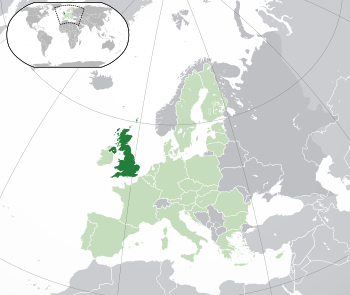The role of national and independent research in delivering
local solutions will be the focus of HGCA’s crop management research plots at Cereals 2014.
The crop management areas will be staffed by technical experts
from HGCA and the research community.
Areas will be clearly signposted, allowing visitors to locate
the best experts to discuss the key agronomy issues facing their arable farming
businesses.
This year, the HGCA research plots showcase research projects
with a combined value over £10m, with around a quarter of this total provided
by levy funds.
The research on show at Cereals 2014 has been designed to help
answer the following questions:
How much do we really know about resistant black-grass?
 |
| Triticum (Photo credit: Fenanov) |
The development of resistance to herbicides in black-grass is a
major threat to cereal production in the UK.
Weed resistance experts will outline how pioneering work,
co-funded by HGCA, hopes to crack the resistance code and develop essential new
management solutions for problematic UK weeds.
This summer, as part of a black-grass resistance survey, the
Rothamsted Research team needs to collect black-grass seed samples from around
150 farm locations.
Visitors at Cereals 2014 will be able to find out how to take
part in this survey. Participants will receive a free analysis of the
black-grass resistance status of their farm.
HGCA Research and KT Manager: Paul Gosling
Can cover crops be used to help get black-grass under control?
Cover crops could provide growers with a useful cultural control
option for black-grass and HGCA-funded trials are looking at the approach.
Visitors will be able to find out how the wider adoption of this
cultural approach requires a better understanding of the agronomy and
associated economic, as well as environmental, benefits of using cover crops in
this way. Researchers will also discuss how ‘biofumigant’ chemicals released
from cover crop residues are helping to suppress weed activity in pot trials.
A new HGCA publication, with solutions to the black-grass
menace, will also be available to pick up from the stand.
HGCA Research and KT Manager: Paul Gosling
How much of a threat is herbicide resistance in broad-leaved
weeds?
Loss of herbicides under European pesticide legislation has led
to very limited herbicide choice across arable rotations and many growers rely
heavily on acetolactate synthase (ALS) products.
Worldwide, the ALS-inhibiting herbicide class has the greatest
incidence of weed resistance. Resistance to ALS herbicides in broad-leaved
weeds is common in other European countries, such as Italy and Spain, and has
also been identified in the UK.
Resistance issues in black-grass have taught us that management
systems are best put in place before resistance becomes a widespread
problem. HGCA-funded research is looking to develop such systems for
cereal/oilseed rape crop rotations by conducting trials on the common poppy.
Poppy has been selected as the ‘model crop’ in the study due to
the significant problems it is already causing in Europe and because resistant
populations have already been identified in the UK.
HGCA Research and KT Manager: Paul Gosling
What’s the best way to control pests this autumn?
 |
| Winged aphid (Photo credit: Wikipedia) |
Visitors will be able to hear how HGCA is looking at the
implications of the recent neonicotinoid insecticide restrictions and the new
research solutions to help growers protect oilseed rape through its vulnerable
early growth stages this autumn.
Rothamsted Research has been using suction traps to capture
aphids for 50 years and experts will be on hand to discuss how the AHDB Aphid
News monitoring service can be used to adapt spray plans, based on regional
information on aphid activity and resistance status. The area will also look at
resistance to pyrethroids in cabbage stem flea beetle and how much damage OSR
seedlings can tolerate before a spray is required.
HGCA Research and KT Manager: Caroline Nicholls
Which products perform best against diseases of oilseed rape,
wheat and barley?
The fungicide performance plots in the wheat, barley and oilseed
rape areas will provide a perfect backdrop for visitors to discuss how
fungicide programmes have been holding up during a year with relatively high
disease potential.
Leading experts involved in HGCA’s independent fungicide
performance trials, conducted at a range of locations across the UK, will be on
hand to discuss the activity of key products on the main diseases of wheat,
barley and oilseed rape.
Information on dose-response, spray timings and growth
regulatory effects will be available to take away to help growers optimise
spray programmes.
The wheat fungicide performance plots also form part of
Haymarket’s Cereals 2014 CPD
trail. By visiting this part of the stand, BASIS-registered
professionals will be able to collect one BASIS point.
HGCA Research and KT Manager: Paul Gosling
 |
| English: Rapeseed Fields. This is the rapeseed in full bloom looking down Nine Elms Lane. (Photo credit: Wikipedia) |
Oilseed rape: are you on top of the spots?
For diseases in the UK, phoma and light leaf spot have the
greatest potential to cause economic damage to oilseed rape. Experts will be on
hand to discuss how we are working to help growers adapt management strategies
to fit local conditions.
The plots will feature one of our weather stations (part of
HGCA’s UK weather station network) and a spore trap to help explain how data
collected from them is being used to refine disease forecasting tools.
Researchers will also outline how selecting varieties with an appropriate mix
of resistance genes for the local disease pressure could be the key for
tackling phoma stem canker.
HGCA Research and KT Manager: Jenna Watts
Micronutrients – when are they necessary?
Following the autumn 2013 launch of HGCA’s micronutrients publication,
growers are now in a better position to assess the need for micronutrient
applications in cereals and oilseed rape.
As our research shows that diagnosing micronutrient deficiencies
isn’t easy to do, this area has been designed to help visitors spot visual
symptoms in pot-grown dwarf sunflowers. Sunflowers have been selected because
symptoms can be induced in them relatively easily.
Experts will be on hand to discuss how to use soil and tissue
analyses to diagnose deficiencies and the best corrective measures for any
deficiency identified – which may not include a fertiliser application.
HGCA Research and KT Manager: James Holmes
Is my nitrogen rate accurate?
There is increasing evidence that some farms may need more
nitrogen (N) than recommended, whereas other farms may consistently need less
N, so savings in N fertiliser use could be made.
This research area showcases nitrogen management research with a
total value of around £5.5 million (HGCA funding around £1 million).
The area will provide the latest from the ‘Auto-N’ project which
is looking to establish if precision technologies can react to variability
across the field and apply the optimum N rate to discrete parts of the crop.
The area also features the ‘LearN’ project, which is testing a
novel ‘strip trial’ approach on a diverse network of UK farms. The trials
compare the farm’s standard N rate against 60kg/ha more and 60kg/ha less to
help farmers determine whether, on average, their N use is about right, too
much or too little
The area also covers work developing a range of genetic
markers to track useful genes through breeding programmes and a project looking
to better understand the release of nitrous oxide (N2O), a potent greenhouse gas, from
arable soils.
HGCA Research and KT Manager: James Holmes
How much does organic matter really matter?
HGCA’s collaborative £2.6m National Soil Programme of research
and development was launched at Cereals 2012 and the full programme was
featured in the HGCA plots in 2013.
In 2014, the soil research plots will provide the opportunity to
take a close look at soil biology and the wide range of organisms that live in
soil and the role of organic matter.
Our giant wormeries, nurtured by Rothamsted Research, will be
back to compare the activity of anecic and endogeic earthworms, which have very
different burrowing behaviours. A soil pit will also feature to help reveal the
effects of incorporating farmyard manure into the soil.
HGCA Research and KT Manager: Shamal Mohammed
Can perennial field margins assist with pest control?
HGCA is driving forward innovative research to help maintain
pest populations below economic damage thresholds and reduce the industry’s
reliance on plant protection products.
As part of this drive, we are a partner in the ‘Ecostac’
project, looking at the potential of perennial field margins to offer pest
management and further environmental solutions.
Co-funded by HDC, this work focuses on horticultural rotations
(including a cereal break-crop) due to the considerable crop protection
challenges faced by this sector.
The researchers will discuss how they are developing commercial
perennial seed mixes that work in different climates and soils, to ensure
farmers in a wide variety of geographical locations will be able to take full advantage
of the research – which is showing potential to increase pest
predators/parasitoid, as well as pollinators and farmland birds.
Representatives from the HGCA-supported The Campaign for the
Farmed Environment (www.cfeonline.org.uk)
will also be on the plots to discuss how a range of voluntary measures can be
used to protect and enhance the environmental value of farmland.
HGCA Research and KT Manager: Shamal Mohammed
How can malting barley growers minimise grain skinning risk?
 |
| English: (Green) the United Kingdom. (Light-green) The European Union (EU). (Grey) Europe. (Light-grey) The surrounding region. See also: Category:SVG locator maps of countries of Europe (Photo credit: Wikipedia) |
Grain skinning in barley is a major quality issue affecting the
malting process and can lead to rejections. Varieties can be rated as having a
low, moderate or high susceptibility to grain skinning. However, reports from
across several years suggest that new spring barley varieties are increasingly
susceptible. There are also strong environmental influences, with skinning
appearing to be more prevalent after extended grain-fill periods, particularly
with prolonged wet weather (as in 2012) or intermittent wet and dry weather.
A concern from growers is that there is a lack of choice in
robust malting barley varieties, including those with good resistance to
skinning. This final area of our Cereals 2014 research plots will look at
research that is improving understanding of grain skinning to help malting
barley growers obtain market premiums.
HGCA Research and KT Manager: Dhan Bhandari
Updating research strategy
The HGCA research consultation was launched at the 2013 HGCA
Agronomists’ Conference in December. Since that time, around 1,000 people have
responded to our questionnaire.
HGCA is now analysing the results and there will be an
interactive display in the corporate marquee at Cereals 2014 so visitors can
help HGCA fine-tune certain key priority research areas.
The new HGCA research strategy will be published in January
2015.
HGCA Senior Research and KT Manager: Vicky Foster
To find out more about HGCA
activity at Cereals 2014, visit the HGCA minisite.
The Global Miller
This blog is maintained by The Global Miller staff and is supported by the magazine GFMT which is published by Perendale Publishers Limited.




No comments:
Post a Comment